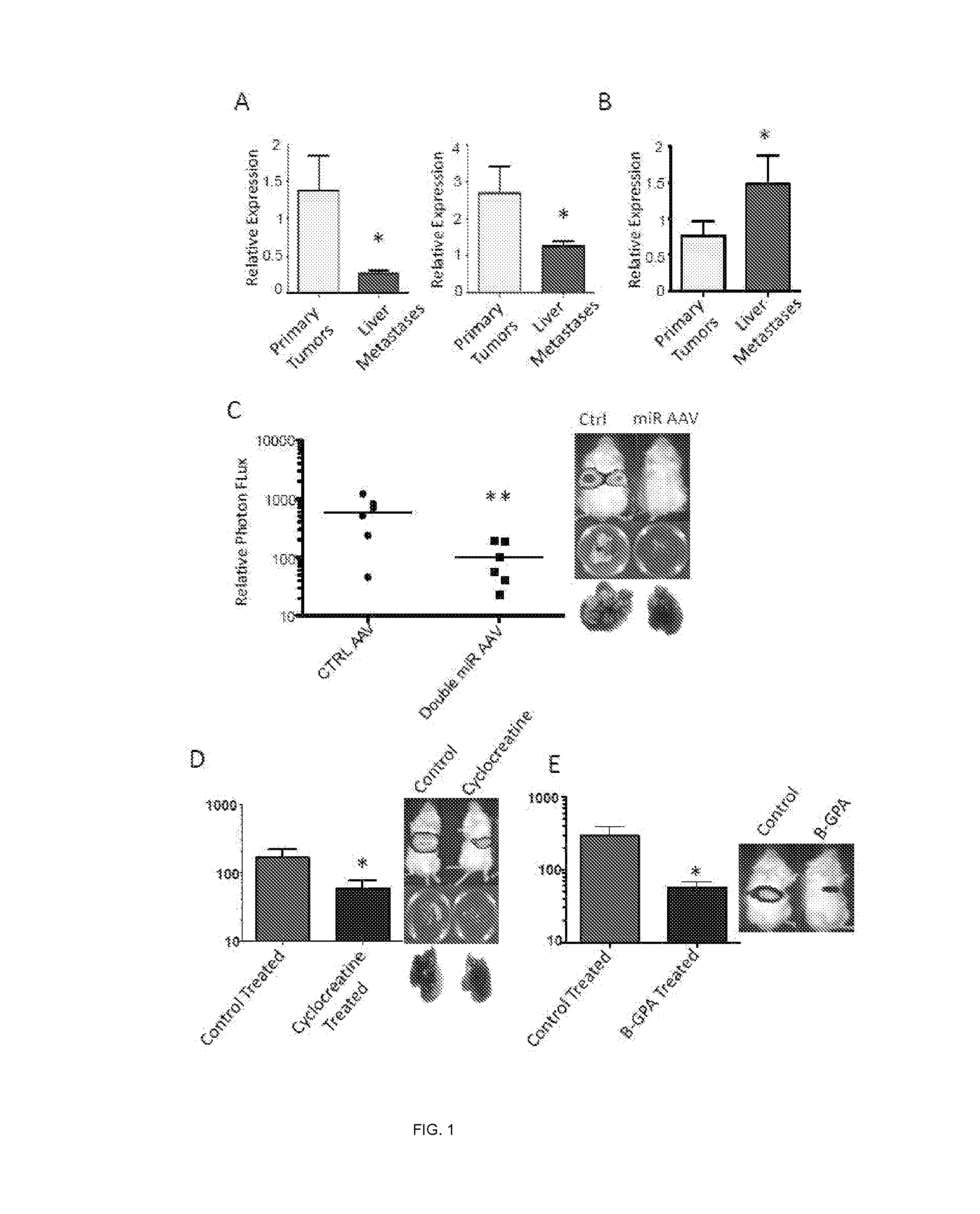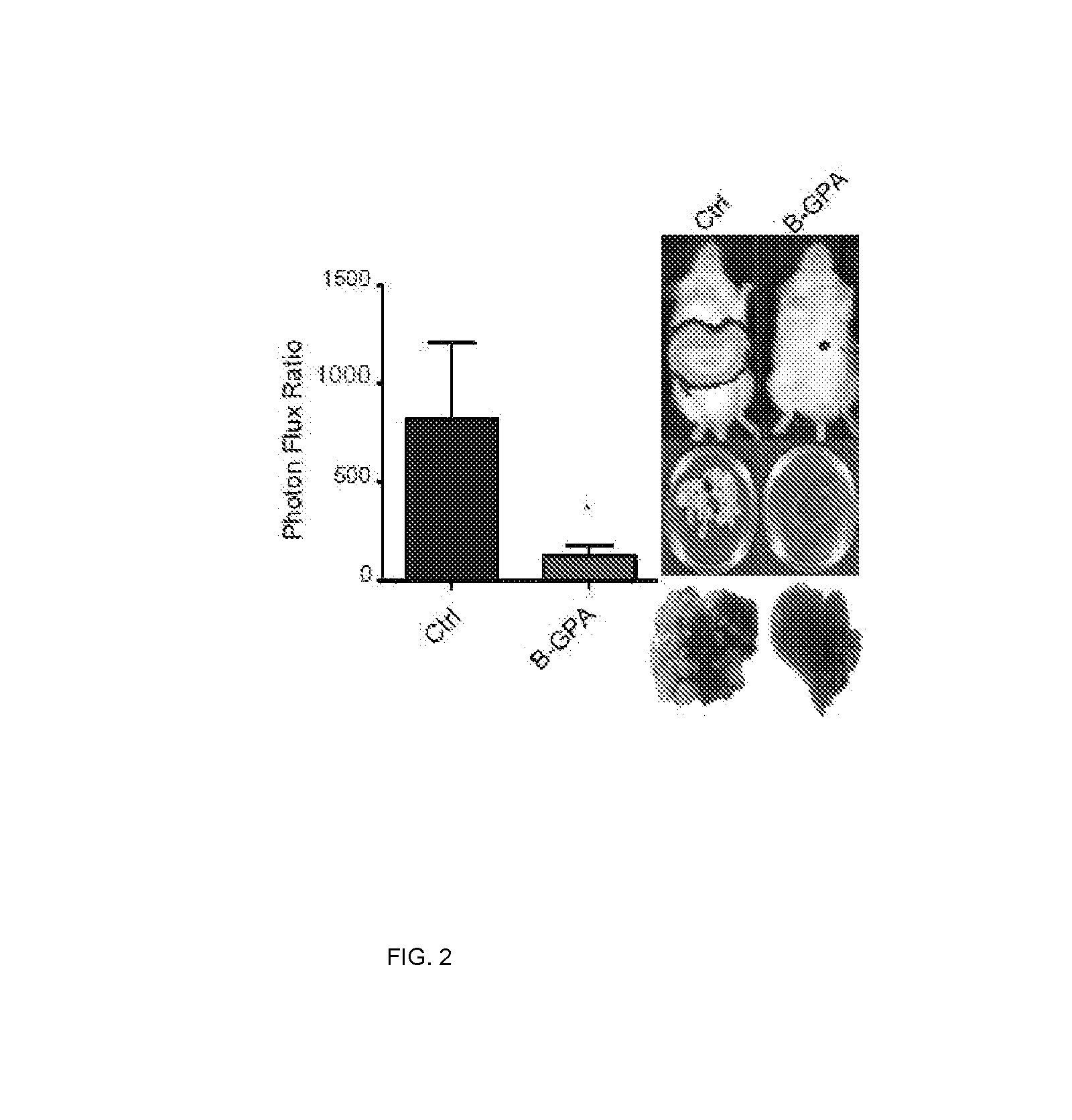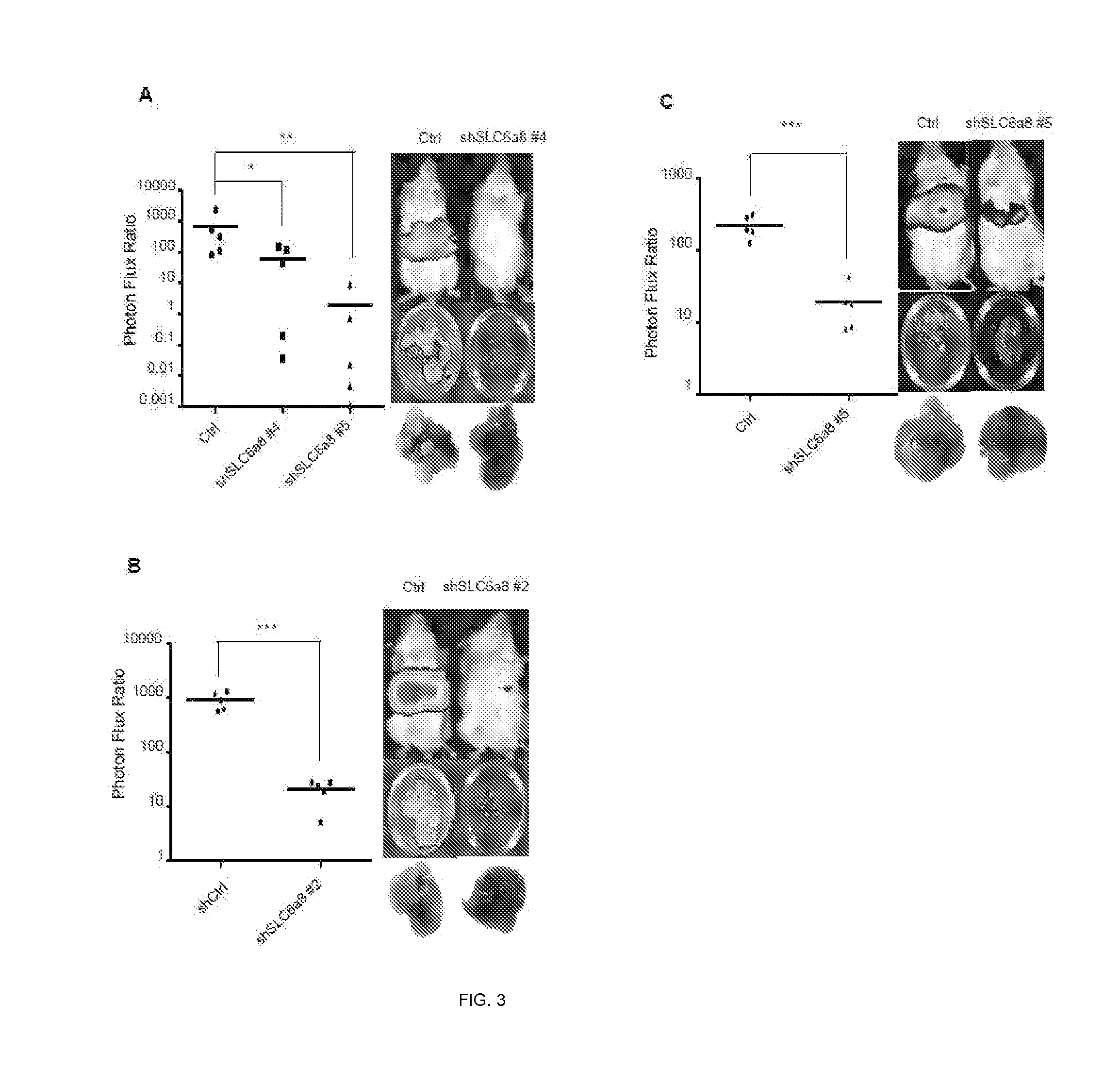Treatment and diagnosis of colon cancer
a colon cancer and diagnosis technology, applied in the direction of biochemistry apparatus and processes, drug compositions, sexual disorders, etc., can solve the problems of colon cancer remaining difficult to diagnose and treat, and recurrence following surgery (the most common form of therapy) is a major problem
- Summary
- Abstract
- Description
- Claims
- Application Information
AI Technical Summary
Benefits of technology
Problems solved by technology
Method used
Image
Examples
example 1
[0139]This example describes materials and methods used in EXAMPLES 2-15 below.
[0140]In Vivo Selection
[0141]1×106 LS 174T cells expressing a luciferase reporter were suspended in a volume of 20 μl 1:1 PBS / Matrigel mixture and injected intra-hepatically into the livers of NOD-SCID mice. Metastatic nodules were allowed to develop over a period of 3-4 weeks and monitored by bioluminescence imaging. Nodules formed were excised and dissociated by collagenase and hyaluronidase digestion into single cell suspension. The cells were allowed to expand in in vitro before re-injection into mice. After three re-iterations of in vivo selection, highly metastatic LvM3a and LvM3b derivative cell-lines were established.
[0142]Lenti-miR Library Screening
[0143]Cells were transduced with a lentivirus Lenti-miR library of 611 miRNAs (System Biosciences) at a low multiplicity of infection (MOI) such that each cell over-expressed a single miRNA. The transduced population was then injected intra-hepatically...
example 2
[0158]As a first step to identify molecular regulators of liver colonization by colon cancer, an in vivo selection was performed on the LS-174T human colon cancer line for enhanced liver colonization through iterative intra-hepatic injection of cancer cells into immunodeficient mice followed by surgical resection of the liver colonies and dissociation of cells. More specifically, liver colonization by 5×105 LS-Parental, LvM3a and LvM3b cells was examined after direct intrahepatic injection by bioluminescence. Mice were imaged at day 21 after injection and livers extracted for ex vivo imaging and gross morphological examination. Photon flux ratios for the groups were obtained and compared. It was found that third-generation liver colonizers LS-LvM3a and LS-LvM3b displayed dramatically enhanced (>50 fold) capacity for liver colonization upon intra-hepatic injection relative to their parental line. Importantly, these derivatives also displayed significantly enhanced (>150 fold) liver m...
example 3
[0160]In this example, assays were carried out to examine whether endogenous levels of any of these miRNAs exhibit silencing in highly metastatic derivatives relative to isogenic poorly metastatic cells. Indeed, miR-483-5p and miR-551a were found to be silenced in highly metastatic LS-LVM3a and LS-LVM3b liver colonizers relative to their parental line and the metastatic SW620 derivative relative to its isogenic parental line. Consistent with a suppressive role for these miRNAs in liver colonization, over-expression of miR-483-5p or miR-551a robustly suppressed metastatic colonization by the LS-LvM3b cells, while inhibition of endogenous miR-483-5p or miR-551a in poorly metastatic parental lines LS-174T and SW480 significantly enhanced liver metastatic colonization.
PUM
 Login to View More
Login to View More Abstract
Description
Claims
Application Information
 Login to View More
Login to View More - R&D
- Intellectual Property
- Life Sciences
- Materials
- Tech Scout
- Unparalleled Data Quality
- Higher Quality Content
- 60% Fewer Hallucinations
Browse by: Latest US Patents, China's latest patents, Technical Efficacy Thesaurus, Application Domain, Technology Topic, Popular Technical Reports.
© 2025 PatSnap. All rights reserved.Legal|Privacy policy|Modern Slavery Act Transparency Statement|Sitemap|About US| Contact US: help@patsnap.com



